#ecological house
Explore tagged Tumblr posts
Text
Coming back after being almost a week without electricity, phone, and internet connection. Huge storms with lightning and rain, and winds. We have never have winds like that here and the roof of so many houses were ripped off, stuff flying, etc. All this bc global warming, and the deforestation and mining in our lands. At this rate, in 5 years we will have tornadoes, a thing we have never ever have here. Nor our lands, infrastructures, states, and culture are prepared for this. Areas of the country are devastated, ppl have died, many are without electricity nor Internet connection so they are isolated. The houses are flooding with water, and the ones that not, are leaking from the ceiling. Too many neighbours and compatriots don't have roofs and the streets are full of fallen trees and pieces of roof material, no electricity, no signal, food rotting, but suffering at the same time for the cold of this terrible winter, and trying to do something, patching even when its gonna go to hell when the storm comes again this next days. More than 33,200 people affected and 41,500 isolated due to 5 days of rain and windstorms. In just a couple of days there were 170,000 homes left without power due to wind and rainstorms and even more as time went by.


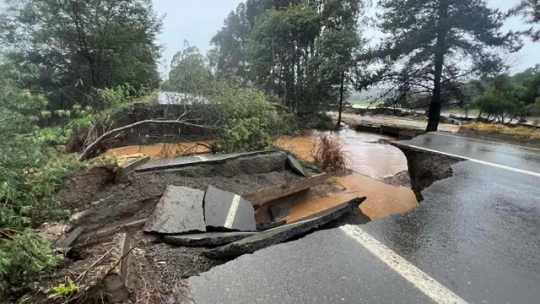
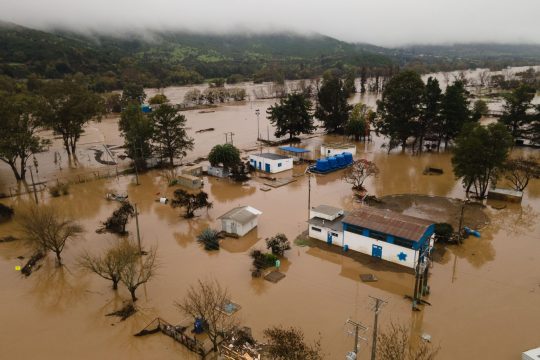


If u want to help me to fix the roof, walls, to buy food and being warm this winter please check my PayPal. If u can't donate, please reblog bc thats the only way to make this being seen by ppl thus receiving help. I'm really not being able to keep living like this, i can no longer cope, so please share.
Here are in my PayPal or MACH . I took the kofi link bc they were charging me a fee.
Please, educate about global warming and the effects on Global South, specially for working class, chronically ill, autistic, disable, and long covid survivor ppl like myself.
Edit: I added links and pics
Edit: the weather is better (is finally spring at this current date 24th nov), but I still need to fix were I live/sleep bc the walls are broken and one of the walls is not a wall, but like 1cm wide stuff and all was bad build so even the door is twisted and dont work correctly, there is black mold that i think is damaging my ears, the paint is falling, the lamp has fallen, everything is broken and ugly, etc. I still need to buy food, meds, and everything so please, please, share or donate if you could. I don't want to survive like this and here, no one mask even when they were the ones giving me covid and they have making me also catch flu the other day bc they cogh over everything and don't care if they kill me, they are abusive and really violent people and are working to put me and everyone in danger. I dont even want to be in my country bc we will have a dictatorship soon, but I have nowhere else to go nor money to migrate (i need like $10.537 dollars or € 9.760,95 euros to pay all the documents, the bank money I have to show to prove I am a human being deserver of rights, the tickets, rent money and stuff to migrate).
I currently (date 14 Jan 2025) have $100 dollars donated (coz i spent 40 in food and meds this past month)
I know i will die here, but at least help me to survive in a less dehumanising way.
Edit: tumblr has blocked me from recive or send messages from the chat and comment of posts, so if you are trying to reach throughout there I can't see it, sorry, I'm cut from any communication (cant even see past messages from chat or asks), except send asks. I'm waiting that tumblr do something, but still hasn't even answered the help file I sent to them.
#global warming#shot of stress#signal boost#support request#support one another#artist in need#disabled#chronic illness#community#health#housing#life#ecology#trans support#covid survivor#long covid#cpunk#autistic#actually autistic#latino#latinoamérica#food insecurity#suicideprevention#emergency#house#living#natural disasters#floods#political exile#political persecution
756 notes
·
View notes
Text
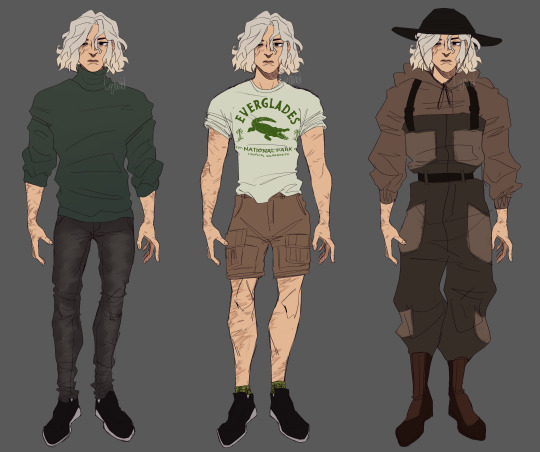

hello it's me again :| reference sheets for these idiots in the Florida ecology modern au. thank you (it's all I will ever draw hope you understand /j)
#mithrun#mithrun house of kerensil#mithrun dungeon meshi#mithrun dunmeshi#kabru#kabru of utaya#kabru dungeon meshi#kabru dunmeshi#dungeon meshi#delicious in dungeon#dunmeshi#florida au#ecology au#my art
684 notes
·
View notes
Text
I absolutely adore VikasRao’s project “Draconology” on DeviantArt.
Some of the greatest speculative evolution fantasy designs out there.



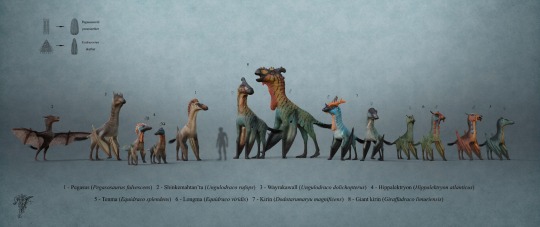
He goes in depth of the dragons anatomy and evolution

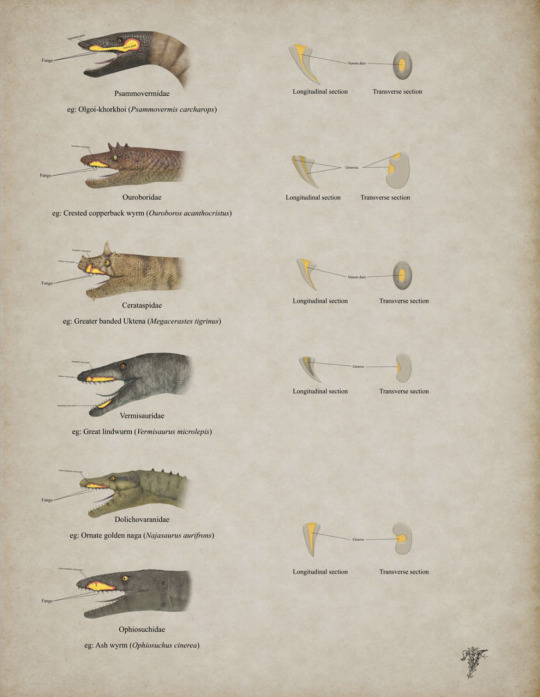



#speculative biology#speculative ecology#speculative evolution#speculative zoology#traditional art#traditional sketch#spectember#paleontology#specposium#fanart#dragon oc#dragon art#house of the dragon#how to train your dragon#dungeons and dragons#dragonborn#dragons#fantasy#fantasy creature#speculative worldbuilding#worldbuilding#world building
849 notes
·
View notes
Text
In 1833, Parliament finally abolished slavery in the British Caribbean, and the taxpayer payout of £20 million in “compensation” [paid by the government to slave owners] built the material, geophysical (railways, mines, factories), and imperial infrastructures of Britain [...]. Slavery and industrialization were tied by the various afterlives of slavery in the form of indentured and carceral labor that continued to enrich new emergent industrial powers [...]. Enslaved “free” African Americans predominately mined coal in the corporate use of black power or the new “industrial slavery,” [...]. The labor of the coffee - the carceral penance of the rock pile, “breaking rocks out here and keeping on the chain gang” (Nina Simone, Work Song, 1966), laying iron on the railroads - is the carceral future mobilized at plantation’s end (or the “nonevent” of emancipation). [...] [T]he racial circumscription of slavery predates and prepares the material ground for Europe and the Americas in terms of both nation and empire building - and continues to sustain it.
Text by: Kathryn Yusoff. "White Utopia/Black Inferno: Life on a Geologic Spike". e-flux Journal Issue #97. February 2019.
---
When the Haitian Revolution erupted [...], slaveholding regimes around the world grew alarmed. In response to a series of slave rebellions in its own sugar colonies, especially in Jamaica, the British Empire formally abolished slavery in the 1830s. [...] Importing indentured labor from Asia emerged as a potential way to maintain the British Empire’s sugar plantation system. In 1838 John Gladstone, father of future prime minister William E. Gladstone, arranged for the shipment of 396 South Asian workers, bound to five years of indentured labor, to his sugar estates in British Guiana. The experiment [...] inaugurated [...] "a new system of [...] [indentured servitude]," which would endure for nearly a century. [...] Desperate to regain power and authority after the war [and abolition of chattel slavery in the US], Louisiana’s wealthiest planters studied and learned from their Caribbean counterparts. [...] Thousands of Chinese workers landed in Louisiana between 1866 and 1870, recruited from the Caribbean, China and California. [...] When Congress debated excluding the Chinese from the United States in 1882, Rep. Horace F. Page of California argued that the United States could not allow the entry of “millions of cooly slaves and serfs.”
Text by: Moon-Ho Jung. "Making sugar, making 'coolies': Chinese laborers toiled alongside Black workers on 19th-century Louisiana plantations". The Conversation. 13 January 2022.
---
The durability and extensibility of plantations [...] have been tracked most especially in the contemporary United States’ prison archipelago and segregated urban areas [...], [including] “skewed life chances, limited access to health [...], premature death, incarceration [...]”. [...] [In labor arrangements there exists] a moral tie that indefinitely indebts the laborers to their master, [...] the main mechanisms reproducing the plantation system long after the abolition of slavery [...]. [G]enealogies of labor management […] have been traced […] linking different features of plantations to later economic enterprises, such as factories […] or diamond mines […] [,] chartered companies, free ports, dependencies, trusteeships [...].
Text by: Irene Peano, Marta Macedo, and Colette Le Petitcorps. "Introduction: Viewing Plantations at the Intersection of Political Ecologies and Multiple Space-Times". Global Plantations in the Modern World: Sovereignties, Ecologies, Afterlives (edited by Petitcrops, Macedo, and Peano). Published 2023.
---
Louis-Napoleon, still serving in the capacity of president of the [French] republic, threw his weight behind […] the exile of criminals as well as political dissidents. “It seems possible to me,” he declared near the end of 1850, “to render the punishment of hard labor more efficient, more moralizing, less expensive […], by using it to advance French colonization.” [...] Slavery had just been abolished in the French Empire [...]. If slavery were at an end, then the crucial question facing the colony was that of finding an alternative source of labor. During the period of the early penal colony we see this search for new slaves, not only in French Guiana, but also throughout [other European] colonies built on the plantation model.
Text by: Peter Redfield. Space in the Tropics: From Convicts to Rockets in French Guiana. 2000.
---
To control the desperate and the jobless, the authorities passed harsh new laws, a legislative program designed to quell disorder and ensure a pliant workforce for the factories. The Riot Act banned public disorder; the Combination Act made trade unions illegal; the Workhouse Act forced the poor to work; the Vagrancy Act turned joblessness into a crime. Eventually, over 220 offences could attract capital punishment - or, indeed, transportation. […] [C]onvict transportation - a system in which prisoners toiled without pay under military discipline - replicated many of the worst cruelties of slavery. […] Middle-class anti-slavery activists expressed little sympathy for Britain’s ragged and desperate, holding […] [them] responsible for their own misery. The men and women of London’s slums weren’t slaves. They were free individuals - and if they chose criminality, […] they brought their punishment on themselves. That was how Phillip [commander of the British First Fleet settlement in Australia] could decry chattel slavery while simultaneously relying on unfree labour from convicts. The experience of John Moseley, one of the eleven people of colour on the First Fleet, illustrates how, in the Australian settlement, a rhetoric of liberty accompanied a new kind of bondage. [Moseley was Black and had been a slave at a plantation in America before escaping to Britain, where he was charged with a crime and shipped to do convict labor in Australia.] […] The eventual commutation of a capital sentence to transportation meant that armed guards marched a black ex-slave, chained once more by the neck and ankles, to the Scarborough, on which he sailed to New South Wales. […] For John Moseley, the “free land” of New South Wales brought only a replication of that captivity he’d endured in Virginia. His experience was not unique. […] [T]hroughout the settlement, the old strode in, disguised as the new. [...] In the context of that widespread enthusiasm [in Australia] for the [American] South (the welcome extended to the Confederate ship Shenandoah in Melbourne in 1865 led one of its officers to conclude “the heart of colonial Britain was in our cause”), Queenslanders dreamed of building a “second Louisiana”. [...] The men did not merely adopt a lifestyle associated with New World slavery. They also relied on its techniques and its personnel. [...] Hope, for instance, acquired his sugar plants from the old slaver Thomas Scott. He hired supervisors from Jamaica and Barbados, looking for those with experience driving plantation slaves. [...] The Royal Navy’s Commander George Palmer described Lewin’s vessels as “fitted up precisely like an African slaver [...]".
Text by: Jeff Sparrow. “Friday essay: a slave state - how blackbirding in colonial Australia created a legacy of racism.” The Conversation. 4 August 2022.
#abolition#tidalectics#multispecies#ecology#intimacies of four continents#ecologies#confinement mobility borders escape etc#homeless housing precarity etc#plantation afterlives#archipelagic thinking#geographic imaginaries#kathryn yusoff#katherine mckittrick#sylvia wynter#fred moten#achille mbembe#indigenous pedagogies#black methodologies
210 notes
·
View notes
Text


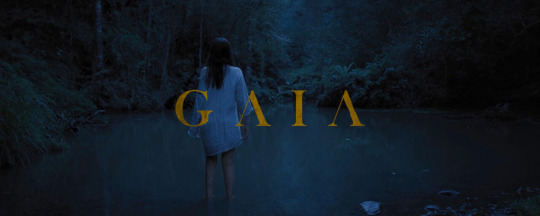



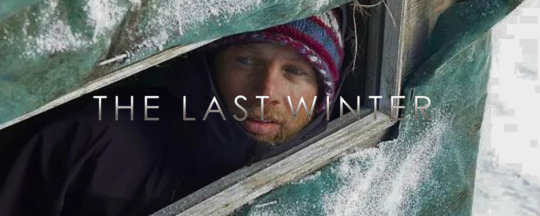


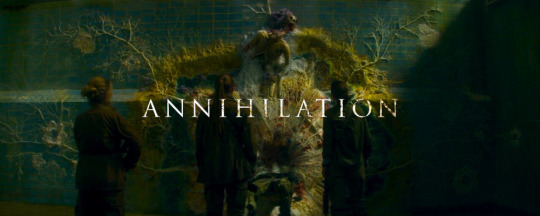


horror sub-genres • ecological horror
the complicated relationship between earth and humans has been very extensive, and this sub-genre shows mother nature fighting back against humans with plagues, animals, weather, or all three.
#horror#horror movies#horror sub-genres#ecological horror#horroredit#moviesedit#filmedit#cinema#the bay#the birds#gaia#mimic#c.h.u.d.#the ruins#the last winter#the thaw#the beach house#annihilation#ok i know this would be argued that it's aliens but ive seen many people say its an allegory for mother nature so it's going on this list#phase iv#crawl
778 notes
·
View notes
Text



The Wonderful Wall Gecko
Hemidactylus frenatus is a gecko of many names. It is refered to in southeast Asia by the various interpretations of its call; in Malay it is the chichak gecko, in Tagalog it is the butiki, and in Thai it's the jing-jok, just to name a few. In English it's also known as the common house gecko, Asian house gecko. The species is native to south and southeast Asia, from India to Papua New Guinea, and has also been introduced to Australia, Africa, and the Americas. They can be found in a range of habitats including tropical forests, savannas, and urban environments.
Most common house geckos are 7.5-15 cm (2.9-5.9 in) long and weigh between 10-20 g (0.3-0.7 oz), but their appearance can vary widely. Individuals can be grey, tan, or beige; some exhibit mottling that closely resembles tree bark, while others are unmarked. The species can generally be distinguished from other geckos by the whorl of spines at the base of the tail, although dropped tails don't have this feature.
The chickak gecko typically hides during the day and emerges at night to hunt. They feed primarily on insects and spiders, but will also consume smaller lizards opportunistically. Both sexes are highly territorial, and will aggressively defend their areas from other geckos. The distinctive call of H. frenatus is often used to announce its territory to other geckos, as well as signalling readiness for mating. Due to their small size, Asian house geckos are frequently prey to cats, birds, snakes, rats, dogs, large spiders, praying mantids and larger lizards.
Wall geckos can reproduce year-round in warmer climates, and in more seasonal areas of its distribution they mate only in the warm months. Males seek out females and entice her by touching her with his snout, followed by biting and holding her neck. Females typically lay clutches of 2 eggs, though she may have up to 4 eggs at different stages of development at any given time. The eggs are laid in a crevice or covered area, and hatch after 46 to 62 days. Hatchlings are totally independent, and reach maturity at 6 to 12 months old. Individuals can live up to 7 years in the wild.
Conservation status: The IUCN has rated the butiki gecko as Least Concern, due to its large and widespread population and commonality in urban spaces. It is considered an invasive and ecologically damaging species in areas where it has been introduced.
Photos
Thai National Parks
Nicole Andrews
Cricket Raspet
#asian house gecko#Squamata#Gekkonidae#geckos#lizards#squamates#reptiles#generalist fauna#generalist reptiles#urban fauna#urban reptiles#tropical forests#tropical forest reptiles#Asia#southeast asia#south asia#animal facts#biology#zoology#ecology
58 notes
·
View notes
Text
I always feel a little out of place whenever I express my vehement disliking of biology as a branch of science to study. "Oh but it's so fun!" how do you people have fun with memorizing terminology. That stinks. I don't wanna count 517 individual formations of fungal bacteria and write a lab report on it. I don't wanna have to memorize like 49 different terms and all of their meanings. Where are the formulas? I miss my numbers
#sp-rambles#I have a bio midterm coming up soon and despite taking 24 pages of notes#Like..gun to the head I cannot tell you a single thing#Other than the formula for allele frequency calculation and how to do it funnily enough#Like I really enjoy biology as a concept but studying it is like pulling teeth#I really like birds and floura and fish and general ecology stuff#And anatomy isn't half bad. I do really like learning and studying human anatomy for some reason#But general biology is boring as sin and my brain instantly starts rejecting everything related to it#Today I had to climb up the mountain near my house just to record bird calls at 6:30 in the morning and 4 C (39 F) weather
47 notes
·
View notes
Text
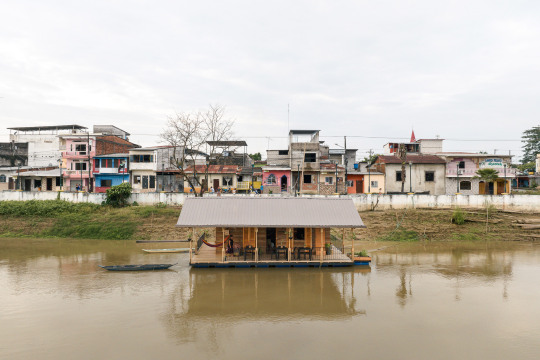
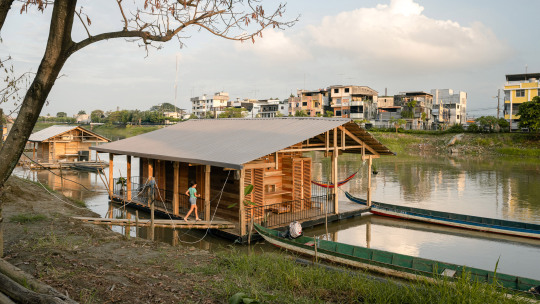
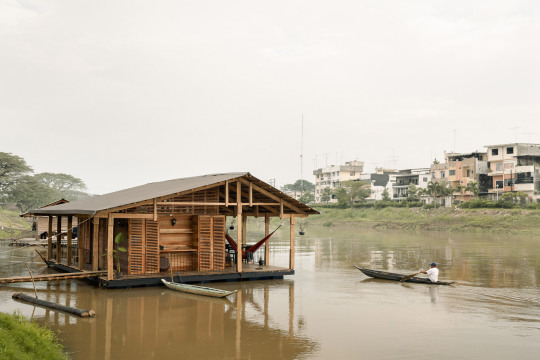

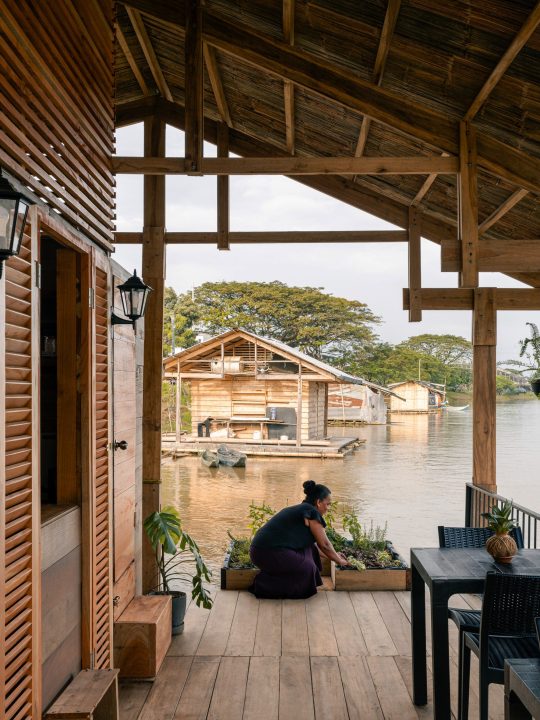
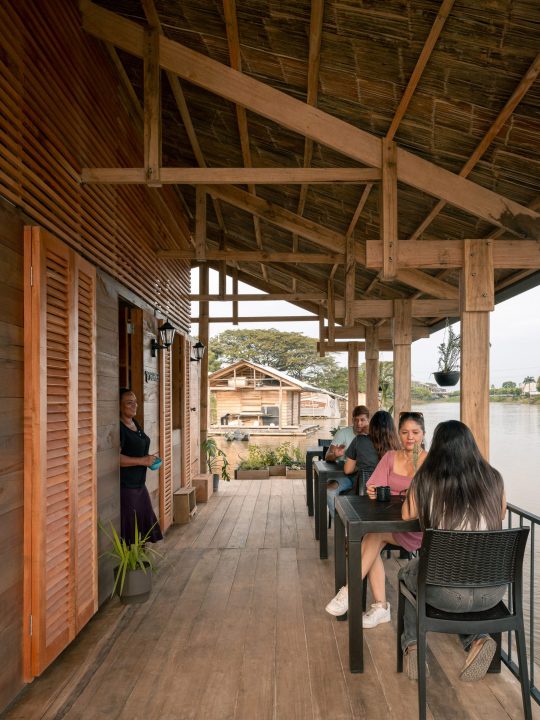

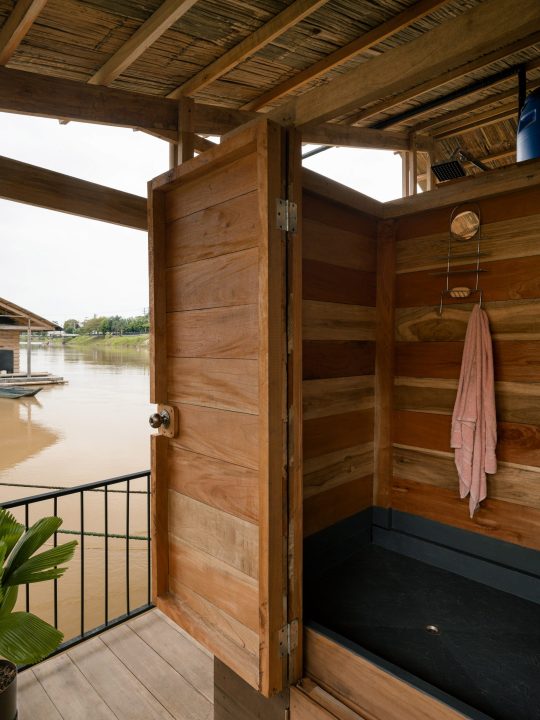
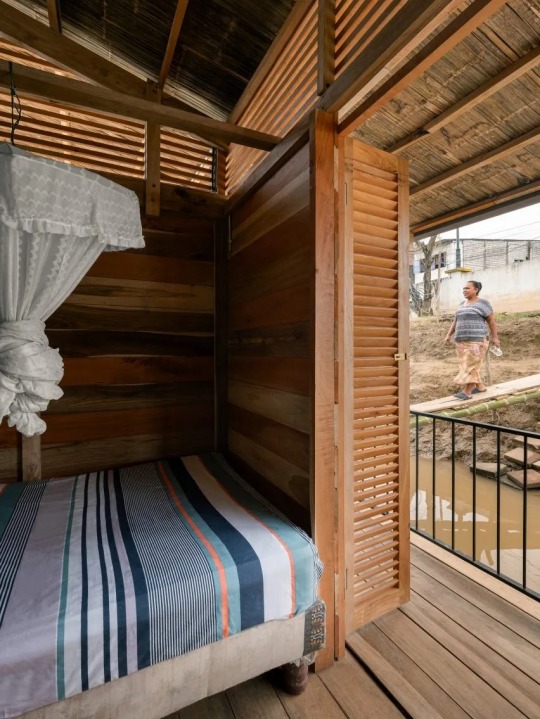
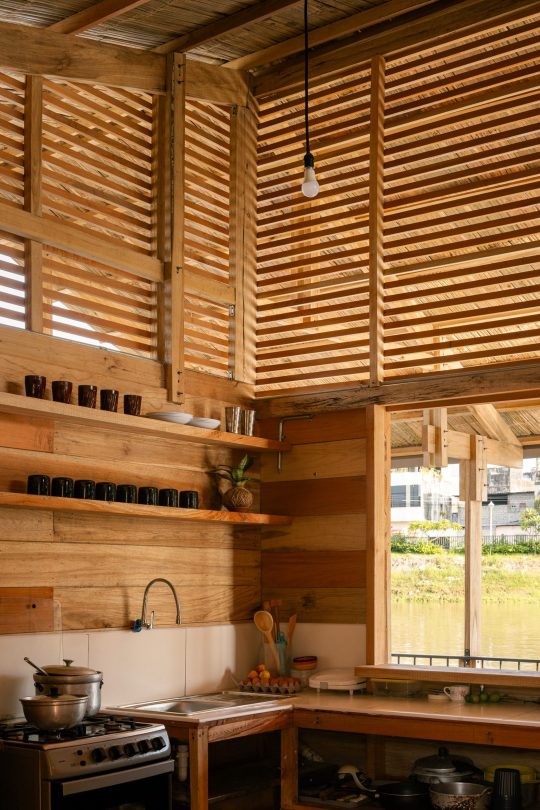
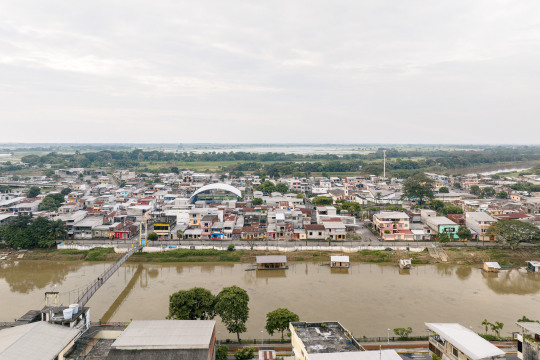

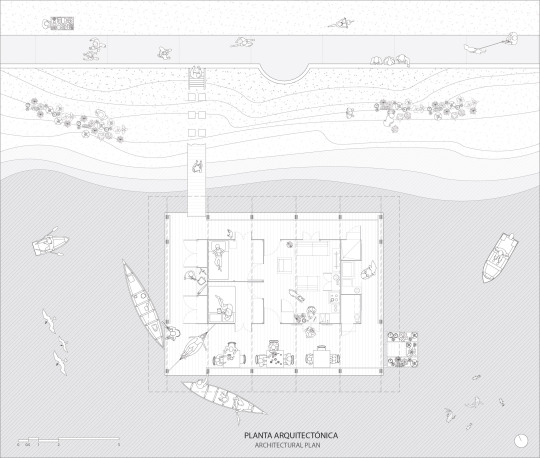
"La Balsanera," Babahoyo, Ecuador,
Several centuries ago, the Babahoyo River in Ecuador, with its floating houses, was one of the main storage and rest points on the trade route taken by merchants and farmers between the cities of Guayaquil and Quito.
Today, the river is no longer used as a trade route, and the number of floating structures has fallen from 200 to 25, putting them at risk of extinction, despite being recognized as intangible human heritage in Ecuador.
Natura Futura and Juan Carlos Bamba
#art#design#architecture#restaurant#floating house#floating home#sustainability#sustainable architecture#millw ork#ecuador#la balsanera#babahoyo#juan carlo bamba#naturafutura#ecology#social business
104 notes
·
View notes
Text
Okay I am forced to admit that Texas is kind of beautiful






#theres some really amazing ecology here like super cool habitats and plants and animals we dont have in TN#it sucks how yall are being overrun by stupid housing developments and way too big interstates#jawjackin#scenery
35 notes
·
View notes
Note
What's your options on bugbears in Golorian being all serial killers or atleast obsessed with fear? I think that has room for, improvement. Definitely feels weird for them though.
I love it.
It's one of my favorite lore changes between D&D and Pathfinder. It makes bugbears feel less like "goblin, but giant". And Paizo has made it clear that some goblins mutate and just grow to Medium size, so you can have giant goblins if you want 'em.
@monstersdownthepath suggested that bugbears have a demonic taint to them. Despite their CE nature, I'd suggest sahkils instead. Bugbears are the Fear of Marauders, of Banditry, of Murder. Only they're mortal. But I bet a lot of their souls end up in Xilbaba when they die.
I imagine that small groups of bugbears are somewhere between bandit gangs and terrorist cells, roaming around and striking for maximum psychological impact as much as to get material goods. Larger communities would be like Halloweentown, only much less friendly. With running competitions for "most blood drained in a single evening". And adopting more terrible monsters into their numbers as Honorary Bugbears. Life's no fun without a good scare! If the Thing Hiding Under Your Stairs and The Shadow on the Moon At Night really wanted to kill you, and then looted your supplies and took over your village until the well runs dry or next year's crop doesn't plant itself. That's a bugbear clan.
I also love the implication in Ironfang Invasion, through characters like Scarvinious and Scabvistin (great naming convention too, IMO), that some, but not all, bugbears are envious of hobgoblins. They like the idea of civilization, of order and rigidity. And so they enlist. And because of their strength and power, they can succeed. If they "beat the bear" out, in Scabvistin's words.
So if you want to give bugbears another hook, here's my alternate, but not necessarily incompatible take. They're brood parasites. Because what's scarier than a baby that's not yours taking over your life?
We know that in Pathfinder canon, goblins and hobgoblins are both communal breeders (thanks to nursery locations in both Rise of the Runelords and Jade Regent). A mother bugbear sneaks into a goblin creche and leaves her baby behind, after killing one of the young and either eating it themselves or feeding it to Junior. The somewhat addlepated and mutation-prone goblins won't notice or mind a slightly hairier infant, right? And then the bugbear baby takes more than its fair share of resources, maybe knocks off a few of the other kids, and then either leaves the goblin colony at a young age in order to find more bugbears, or stays and muscles his way into a leadership position.
Doing the same to a hobgoblin community is riskier. The hobgoblins are much more in tune and observant. But in this case, it becomes more of a mutualistic relationship that could tip into parasitism on either end. Maybe the bugbear can get along in the hobgoblin village by learning discipline, or be content with the role of scavenger or brute. Or the bugbear could try to take over, if the hobgoblins are weak. And if the bugbear doesn't have the resources to survive and thrive, the hobgoblins send them off on a suicide mission.
And even though they only rely on other goblinoids for raising their young...most of the time, there are rumors that they do this to other peoples. Even if it happens once in a hundred years, everyone will know the story of how the Munson boy got very hairy and very big very quickly, and then slaughtered and spit-roasted the family dog when he was only 4? That kind of fear keeps the bugbears powerful. And makes the bugbears very happy.
#bugbear#pathfinder rpg#pathfinder 1e#pathfinder 2e#D&D#goblin#hobgoblin#goblinoid#ecology#brood parasite#plot hooks#did you hear the news about eddie munson?#could have been a werewolf of how keen his nose was and how big his sideburns grew#and then he burned down the family house and disappeared on his eighth birthday#you can still hear his laughin on the anniversary of that night#go to the ruins of the ol munson house if you don't believe me
159 notes
·
View notes
Text
sometimes i think about my professor that used to like lowkey have a crush on me (he was at least 55.) last semester and every time i tell my friends about the stuff he did towards me i realize how u incredibly not normal that was
#🎀 - mello talks too much#OKAY NOTHING TOO BAD DONT WORRY#he asked me to take him to the airport one time and drive his car back to his house#he also would stand next to me during tests and just like watch me#like i’m not exaggerating#just WATCH me#at the desk next to me#and then he told me i smelled really good#and then he tried to give me a multitude of answers during the test#and then when i was sitting with my friend he like literally sat on the table i was at and starting talking to me like we are friends#and then he would be like ”he mello TEXT me and remind me to send out homework” like hello?? i’m not texting you??#and one time when i got my haircut he announced to everyone in my lab how he noticed n how good it looked#and NOW i see him sometimes and he steps on my foot and always says hi to me im in front of everyone#and he is so loud#so everyone in my bio class looks at me#also he zipped up my backpack for me like 2 days ago#which doesn’t sound weird but paired with everything else he did#AND THEN he asked for me to come to his field trip with his ecology class#which like#????#what#and he calls me smart like all the time#yeah#he was a strange guy#still see him which is insane#i am totally forgetting more this#things
21 notes
·
View notes
Text
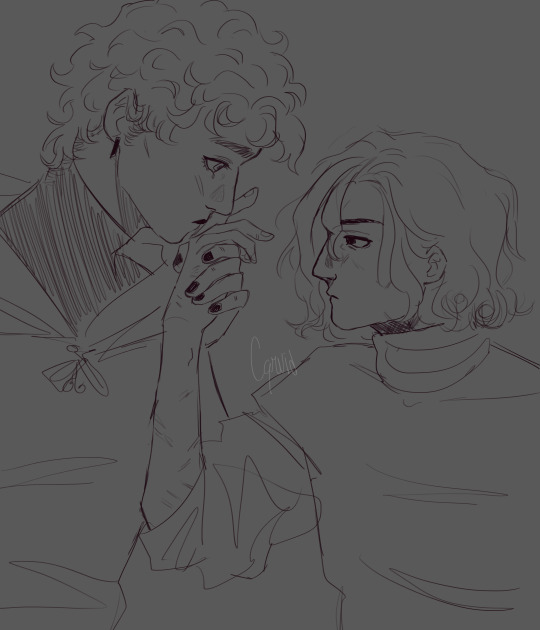
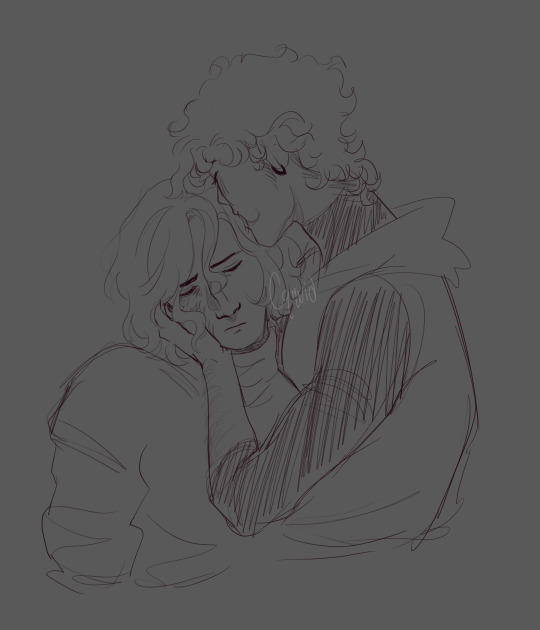
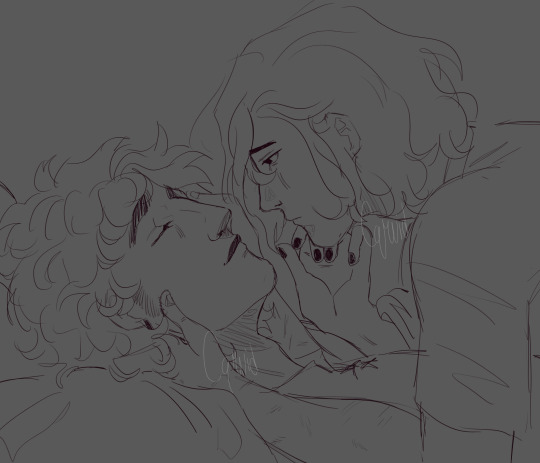
uhmmmm various sketches from today of kabru and mithrun's intimacies with being life partners because they bring me such joy and I love them. thank you (as always, not ship art they're just some secret third thing, but take it as you will) and because I'm allergic to ever drawing them normally, once again these are all of them in my wife and i's Florida ecology modern AU. thank you [salute emoji]
#poses inspired by ones i found on pinterest. also.#mithrun#mithrun house of kerensil#mithrun dungeon meshi#kabru#kabru of utaya#kabru dungeon meshi#delicious in dungeon#dungeon meshi#dunmeshi#my art#florida au#ecology au#i feel like the standing emoji
219 notes
·
View notes
Text
The Last Slavic Dragon
“The last dragon of the great fields and wild lands was confirmed to have been killed during the last autumn of 1674. The beast was reported to have raided a graveyard and killed five cattle and torched a chicken coop. It was reportedly injured by a group of mercenaries and was later pursued by them, and was killed by ambush while the dragon was trapped in the forest. Oh the irony and tragedy of the great dragon, once feeding on the bison of the forest and the aurochs of the plains, was reduced to eating the corpses of forgotten peasants and sustaining off of thievery.”
-Janusz Jankowski, 1675

#speculative biology#speculative ecology#speculative evolution#traditional art#speculative zoology#traditional sketch#spectember#specposium#fanart#paleontology#poland#slavic#ukraine#dragon oc#house of the dragon#dragon art#how to train your dragon#dungeons and dragons#dragonborn#1700s#hunting#forest#paleontologist#paleoart#paleo art#paleostream#paleomedia#paleo meme#paleoillustration#monster hunter
34 notes
·
View notes
Text
Between 1970 and 1973, rent strikes erupted in towns and cities throughout the Republic of Ireland. These were organised by local tenants’ associations, most of which were affiliated to the National Association of Tenants Organisations [NAoTO] [...], an umbrella organisation for local associations established in 1967. [...] [O]rganisers claimed that at its peak almost half of all council tenants in the state, or approximately 50,000 households, were withholding their rents. These localised campaigns coalesced into a state-wide movement in late 1972 with [NAoTO] declaring a “national rent strike” which lasted until August 1973. At this point, the government conceded to [NAoTO]'s demands including revisions to the B scale differential rent system, a rent freeze for those on fixed (non-differential) rents, [and] better terms for tenant purchase [...]. [T]he long-term consequences are more ambiguous [...]. Nonetheless, it was described in an article in the Irish Times as “undoubtedly the most dramatic [...] victory ever achieved in this century by tenants versus landlords” [within Ireland]. [...]
Despite the scale and significance of these rent strikes, before this project started there was effectively no information available about them. The [Community Action Tenants Union Ireland] CATU rent strike history project aimed to address this situation, which we understood as an important gap in the collective memory [...]. The project set out to leverage the history of the rent strikes to engage people and involve them in the contemporary housing movement by providing an example of the power of collective action and building connections [...]. The project has been ongoing since late 2021 [...].
---
Gray (2018a, 2022) argues that, beginning in the 1960s, the urbanisation of capital created a new [...] working-class struggle in Italy, [...] characterised by divisions related to suburbanisation and geographical fragmentation. [...] Clare's (2020) analysis of [...] clandestine textile workshops in Buenos Aires highlights the importance of the spatial dimension [...] by describing how workshops are located according to a distinct socio-spatial strategy that divides the workforce and minimises outside interference, thus ensuring access to cheap, vulnerable labour. [...]
There are [...] connections between political decomposition and the loss of memory and knowledge of struggle, such as in the case of workplace restructuring after conflict to prevent the transmission of knowledge and experience between different generations of workers [...]. Responding to this situation, there has been a growing interest in recovering forgotten or suppressed histories of housing and urban struggles [...].
---
The background to the CATU rent strike history project is the so-called “housing crisis” in Ireland, which, contrary to the idea of a specific moment of crisis, has been a continuous feature of Irish society since at least the 19th century [...]. A persistent challenge faced by CATU and other similar movements is that of overcoming a pervasive sense of disempowerment and persuading people that it is worthwhile to engage in collective action [...]. [T]he [housing] crisis [is not necessarily] a unique moment of dysfunction in the housing system [but is] rather [...] a persistent feature of Irish, and increasingly international, capitalism [...]. [L]and and housing have been deeply interrelated with anti-colonial struggles including the Land War of the late 19th century, the civil rights movement, and anti-internment rent strikes in the 1960s [...].
---
27 oral history interviews were carried out with people who participated in the rent strikes in the 1970s [...] from various towns and cities across the Republic of Ireland [...]. Approximately 2,000 relevant articles published in local and national newspapers between 1966 and 1973 were identified and subject to close reading [...] Further data was gathered through a review of 161 articles about the rent strikes in radical newspapers [...]. Previous analyses have emphasised the atomisation of new suburban council estates and how these were part of a concerted effort to undermine working-class radicalism (McManus 2003). Beginning in the late 1950s, suburbanisation was further accelerated by the state's policy to attract [...] speculative investment in commercial office space and the displacement of working-class communities, in particular from inner-city Dublin [...]. However, [...] that fragmentation was countered in the late 1960s and early 1970s through the widespread, rapid formation of tenants’ associations organised around shared interests [...].
The interviews and newspapers produced by local tenants’ associations demonstrated the organisational density and array of community organisations [...] that fought to improve the conditions of everyday life [...]. Some of the forms of organisation that existed across many areas included collectively built and managed community centres, women's and youth committees, sports clubs, social activities for elderly people, and food cooperatives, amongst others. Illustrating the scale of community organising, in August 1973 the [NAoTO] newspaper reported that the West Finglas Tenants Association was running regular outings to the seaside that were attended on average by 2,000 people transported in 20 double-decker buses. [...] As described by [P.], a rent strike organizer in Ballyfermot:
"Street committees didn't just run the rent strike, they also ran summer programmes. If there was old people to come around at Christmas, we'd arrange for someone to cook an extra bit of dinner. It was more a living thing. It wasn't just a single issue. [...]"
---
All text above by: Fiadh Tubridy. "Militant Research in the Housing Movement: The Community Action Tenants Union Rent Strike History Project". Antipode Online Volume 56, Issue 3, pages 1027-1046. May 2024. [Bold emphasis and some paragraph breaks/contractions added by me. Presented here for commentary, teaching, criticism purposes.]
152 notes
·
View notes
Note
have you played flesh blood and concrete? it seems like something you might like
hi morgan, noooo I have not yet! but you are so so right, flesh blood and concrete looks like exactly my type of thing. it's actually been on my radar for a while-- I think since I saw you posting about it actually-- but now I have an official Recommendation I gotta move it up the list :)
#love love love that I have become known as a living houses enjoyer. my ecological niche fr#I would have got to it sooner except I am genuinely just very bad at actually playing games.#I like em I can just never put aside the time in the same way I can for books#but I will have to check flesh blood and concrete out!#ty for the ask <3#voices from beyond
4 notes
·
View notes
Text
Conservationists: Hey, Scottish Government, given the massive threat to the ecosystem that outdoor cats currently are, perhaps we should have some form of cat control? Mandatory microchipping and registration maybe? Or not allowing people who live in conservation-sensitive areas, or near known habitats of endangered species, to own cats? We should probably do some research about if it would be beneficial to neuter cats owned by people who live in vulnerable areas.
Scottish Government: Hmm, we will think about what you have said. The microchipping thing is a good point.
A Stunning Number Of People, For Some Reason: THE GOVERNMENT WANTS TO BAN CATS?!?!
#me#this was in the news last week but I'm still kind of just. siiiigh over it#anyway I think there absolutely should be some form of control over outdoor cats in Scotland#ESPECIALLY in areas with wildcat populations#outdoor cats cause a lot of other ecological problems too#(they kill SO. MANY. BIRDS)#but I personally feel quite strongly about the wildcats#they're potentially functionally extinct in the wild atm and hybridisation is playing a BIG role in that#also I simplified for tumblr post sake but the 'don't let people have cats near conservation-sensitive areas' recommendation was actually#'maybe in housing developments near conservation-sensitive areas people shouldn't be allowed NEW cats'. not taking away already present cat
4 notes
·
View notes